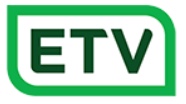
I'm a fine arts graduate of the University of Minnesota, majoring in painting, sculpture, film and photography.
I've worked as a photographer for a community newspaper, founded two community media access centers; (Model Cities Video Access Center and University Community Video).
I founded and operated three media production businesses; (Associated Images, Video Resources and McCoy & Associates). I worked with numerous Fortune 500 companies in the Upper Midwest; US Bank, United Health Group, Target, Daytons, General Mills, Control Data and Cray Research and as a nonprofit events producer for Fraser, Twin Cities United Way and Arc Greater Twin Cities.
I also worked in the "Title IX compliance market" with 360 Stay Safe producing a multi-year series of college safety training videos distributed to over 250 Colleges and Universities.
I retired my media production firm, McCoy & Associates, in 2020 and I'm now focusing my passion on a new initiative as "Media Archive Producer" at Minnesota Media Arts www.MNMediaarts.org.
I'm married to my lovely wife Nancy for over 50 years with two sons and two grandsons. Living in Prospect Park, Minneapolis, Minnesota, USA
PLEASE CONNECT WITH ME IF YOU ARE:
► Looking for media archive consultation, media collection care management and digital conversion of those slowly dissolving media assets. There's an ongoing analog media crisis impacting all of us, as media tapes are eroding and playback VTRs/VCRS are almost becoming obsolete. We have a short time to preserve our cultural heritage and media stories.
Please connect with me for any media archive questions through my connect form below.
SPECIALITIES:
► Media program design strategies, preproduction planning
► Media Archive Producer services through MN Media Arts
Leveraging my vast experience and expertise in the media production field, I'm now focusing my passion on media preservation and conservancy projects. I'm working with Minnesota Media Arts, a ground breaking non-profit organization serving the independent artists, video-film makers and arts communities.
$100
Per hour
$50-250
Per asset
$30-375
Per project

"Ron helped us launch our Media Archive Collection Care management project at Eagan Television in 2019-2020. Along with his colleague, Mark Stanley of Minnesota Media Arts, Ron helped us define the parameters and outcomes for our 30-year-old public access media collection archive project. Proper storage elements and an online visual inventory tool were created to engage our initial visual inventory phase. His overall attention to the process helped us maintain our focus, we look forward to further implementing MNMA's designs" ...Mike McIntee

“I’ve worked with Ron since we launched the initial DVD TV Spot library back in 1999. His understanding of our needs and recommended technology solutions helped us reach our goals faster to deliver this great resource initially as a DVD library and now a more dynamic Media Library and Project Management website. (2005-2015), I found Ron’s strategies and quick thinking extremely valuable in helping us fine tune the project as we added more media capacity and improved resource tools for our staff producers. Ron is a wonderful, responsive resource you would be proud to have on your next project.”... Nancy Shellum

"Ron and his team deliver consistent, highest-quality media productions. Throughout the course of a long and complex project with a diverse set of stakeholders, Ron provided critical expertise in the video production process through-out the program cycle; 2007-2017. It was a relief to be able to give Ron strategic-level guidance and then turn it over to him to execute, knowing that we'd get great returns on both our time and cost investment. Ron has been a key part of our team's success!" ... Josh Peterson
The Magnetic Media Crisis: The majority of our cultural heritage memories and stories are still on magnetic tape and have often been stored in conditions not designed for insuring their stability and preservation.
Existing media collections are mostly in the hands of private individuals or organization with limited resources to properly store, maintain or even catalogue their recordings. Multiple generations of artistic work are in eminent danger of being lost. These magnetic recordings deteriorate over time and after decades of neglect can be rendered unplayable. Adding to the crisis, the required media playback equipment, videotape and videocassette players are becoming more obsolete and harder to maintain.
The Media Archive producer helps define your overall project objectives and helps guide you through the preservation process.
What are your archive project’s goals and objectives? Are you interested in developing a comprehensive media archive structure that defines content descriptions and metadata for each asset or are you just trying to swap a random box of tapes for a hard drive file folder with random data files?
Are you considering multiple digitizing standards delivering both a "master archive preservation format" and a smaller file size for a more compressed resolution "access distribution file"? Is your ability to complete the metadata steps dependent upon viewing the media asset after the content is digitized? Any pre-conversion media playback can often impact the quality of the recorded media. In addition to the pre-conversion visual inventory, an additional metadata step can be engaged to add more content descriptions once the assets are safely in digital form.
The videotape medium, whether open reel or videocassette, is subject to deterioration. Collection integrity is based on the storage environment, dust, temperature, humidity levels, magnetic interference and recent playback activity. Often videotapes can also contain mold. However, the most prevalent issue with "damaged media" is the separation of the metal oxide (recording medium-dull side) from the acetate binder (shiny side of the tape). This is call "Sticky Shed Syndrome" and can be stabilized through de-hydrolysis, a tape baking process.
Based on your preservation goals, what are you planning to do with the new digital files and how are you going to share them. These plans should include a lossless file codec for the master preservation copy and subsequent smaller compressed format for possible sharing or posting for streaming media. "Just making me a Video DVD" (a potential obsolete medium) request may not provide the best preservation quality. A better approach is to request your files be converted to a data disc or portable hard drive, or posted on a file-sharing site.
Here are six suggested steps...From The Bay Area Video Coalition, a pioneer organization in media preservation.
1- Identification: What media types and formats are included in the archive collection? Is their existing visible damage or deterioration? Is the media playable? Can you easily separate early generation masters from their distribution copies?
2- Description and Cataloging: Do you know the media asset's information; title, contents, location, production dates and significance of the content? Can you provide a contextualized description from the label or program notes? Once you complete the inventory process, you can then start to develop your “preservation plan”. The plan forms the foundation for our next steps.
3- Storage: The two steps of preservation involve safe storage of original analogue content and transferring or digitizing to a new digital format with again storage in mind. A safe storage environment is critical for both steps. Digital conversion allows for multiple copies or back-ups, with options including Hard Disk Drives, The Cloud, (someone else’s hard drives) and Linear Tape (LTO) cartridges, (Hardware dependent). Storage concerns should continue beyond the transfer process. Will you trash the original media or continue storing it safely? How and where will the new media files be stored?
4- Reformatting and Digitation: Essentially this means that you are moving your content from the obsolete tape formats to a new digital medium where you’ll have the best future playback success. Most projects require a dual format process; a Master File and separate Access File will be created with different resolutions, files sizes and storage requirements. MN Media Arts has website links to better inform you regarding preferred digital formats, codecs and meta-data standards elsewhere on this website (see below)
5- Checking your media over time: It’s highly recommended to inspect and play your media both immediately upon transfer for quality control purposes as well as over time, to insure stable storage.
6- Media Distribution beyond archive. Once again, as part of your project goals, are you considering sharing or distributing your content to others? This is where your distribution vs. archive format comes into focus. This also gets into content ownership and copyright issues. Do you own or have the rights to distribute this content, even on a no fee basis? We’ll address those concerns in a future post.
(Copyright ownership documentation may impact a producer's ability to get tapes professionally transferred. Duplication and Transfer facilities want to protect themselves, so they often require "proof of content ownership" before the transfer process is started with a blanket statement that they will not transfer any commercial copyrighted materials.)
Metadata ensures that we will be able find data, use data, and preserve and re-use data in the future. Metadata makes it much easier to find relevant data and content of your new digital files. Metadata also makes digital media assets easier to find because it explains exactly what the asset is about. There are three main types of metadata: descriptive, administrative and technical. For example, a visual inventory of your media collection may include; unique asset ID number, data points on the video content, who, what, why, when, along with the running time or sequence number.
Often the video case or cassette label information is transcribed or photographed. Condition of the analog media asset itself is noted, the manufacturer, integrity and any visual damage. Once converted, these unique asset numbers become the new file names along with descriptors to ID the video resolution or quality. Metadata can also be embedded back into the file for future readability and search purposes.
What is the value of the memories or cultural heritage assets you are planning to preserve? I highly recommend a visual inventory process to better define your collection's status and identify critical metadata information. If you just want to transfer "found tapes", there are some low-cost national vendors than can transfer "consumer home movies as is" for under $25 per tape.
However, the better approach is to use professional resources to address the important tape preparation process to prevent "sticky transport" or "tape damage" playback issues. $50-75 per tape. There are also resources to convert some of the legacy formats from the early 1970s, open reel EIAJ 1/2" and 1" Type C videotapes and 3/4" U-matic videocassettes $150-$250 per tape. In addition to conversion costs, you should also budget media costs for storage hard drives, shipping and handling.
In either case, you should still complete a visual inventory of your analog media assets. This "collection care" step will provide the scope and asset quantities you will need for digital conversion estimates. Remember the better organized you are in this initial step will offer significant organizational benefits through-out the preservation process.

Built with Mobirise
Free Website Maker